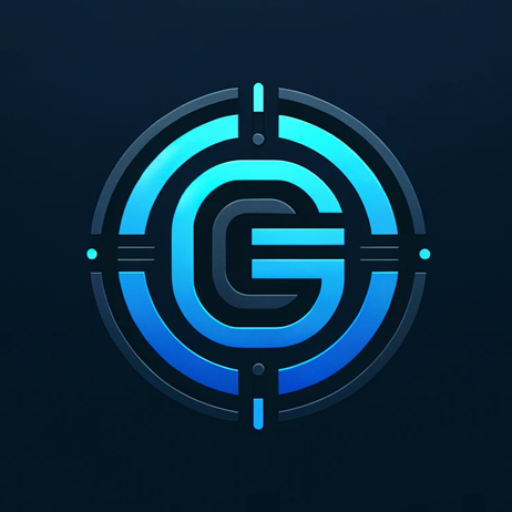PACES GPT-AI technical paper analysis
AI-powered academic paper analyzer
What is the main problem addressed in this paper?
Describe the method used in this study.
What is the key claim of this paper?
Explain the evaluation method of this paper.
Does the evaluation support the claim? How or why not?
Related Tools
Load More
All Things Air Force GPT
This GPT will help you write EPB's, Award Packages, along with AFI Guidance.

GPT Instruction Genius
[V4] Crafts detailed instructions from your ideas, to create GPTs that provide structured and consistent outputs. Tip: Write '/changelog' to see the latest changes!

Correct English GPT
Write English like a native speaker. Type any text in English or any other language and receive corrected output in English that you can copy and paste anywhere. To improve the style of the corrected text, send "s"

CBT GPT
CBT insights; not a substitute for licensed therapy.

Find the Perfect GPT for you!
This searches for the perfect GPT for your use case. Just tell it what you want and it will get busy finding the perfect GPT for your need.

GPTech
I help you build a better GPT
20.0 / 5 (200 votes)
Introduction to PACES GPT
PACES GPT is a specialized version of ChatGPT designed to analyze technical papers from academic conferences like CVPR, NeurIPS, ArXiv, and ICLR. Its primary function is to summarize these papers using the PACES method, which stands for Problem, Approach, Claim, Evaluation, and Substantiation. PACES GPT provides researchers with concise, clear summaries that highlight the core aspects of a paper, making it easier to understand and compare different research works quickly. For example, a researcher looking to survey the latest advancements in computer vision could use PACES GPT to get a structured summary of multiple papers, identifying key innovations and methods at a glance.

Main Functions of PACES GPT
Summarizing Research Papers
Example
Providing a PACES summary for a CVPR paper on a new image segmentation algorithm.
Scenario
A computer vision researcher needs to quickly understand the contributions of a recent paper to decide if it’s relevant to their work. PACES GPT delivers a structured summary highlighting the problem addressed, the novel approach taken, the claims made by the authors, the evaluation methods used, and whether the results support the claims.
Answering Detailed Questions
Example
Explaining the limitations of a specific method presented in a NeurIPS paper.
Scenario
After reading a PACES summary, a researcher might have specific questions about the limitations or potential improvements of the method. PACES GPT can delve deeper into the paper, providing detailed answers about potential weaknesses, alternative approaches, and further research directions.
Identifying Related Works
Example
Listing three related papers to a study on reinforcement learning published in ICLR.
Scenario
A researcher working on reinforcement learning wants to know about other significant papers in the field to build a comprehensive literature review. PACES GPT can identify and summarize related works, helping the researcher to understand the broader context of their study.
Ideal Users of PACES GPT
Academic Researchers
Researchers in academia benefit from PACES GPT by receiving concise, structured summaries of recent papers, saving time on literature review and helping them stay updated with the latest advancements in their fields. The detailed answers to specific questions further aid in deepening their understanding of particular topics.
Graduate Students
Graduate students, particularly those working on their theses or dissertations, find PACES GPT useful for quickly grasping the essential points of numerous papers, enabling them to efficiently identify relevant research, understand complex methods, and build their bibliographies.

How to Use PACES GPT
1
Visit aichatonline.org for a free trial without login, also no need for ChatGPT Plus.
2
Prepare the technical paper or conference document you wish to analyze. Ensure it is in a readable format.
3
Enter the details of your document into the PACES GPT interface, focusing on the five key areas: Problem, Approach, Claim, Evaluation, and Substantiation.
4
Submit your document and wait for the detailed summary, which will include a concise analysis of the five PACES questions.
5
Review the provided summary and use the follow-up question feature to get additional insights or related research papers.
Try other advanced and practical GPTs
EI- Producer
AI-powered content creation and marketing tool

GPT 英会話
AI-powered English conversation practice tool

英語文章チェック
AI-powered English checker with Japanese support

AI 绘图提示专家
AI-powered image prompt generator

Creative Thinker
AI-powered lateral thinking for unique content.

BlakBot A.I.
AI-powered solutions for the African diaspora.

Mindfulness & Meditation Guide
AI-Powered Mindfulness Prompts

Video Maker
AI-Powered Video Creation Simplified

Write Like A Human
AI-powered writing that mimics human creativity.

Rah Mat
Unlock the Power of Phonemes with AI.

Research Assistant PDF AI
AI-powered academic research assistant.

Music GPT : Playlists & Jukebox
AI-powered music playlist creator.

- Research Analysis
- Paper Summarization
- Technical Insights
- Academic Review
- Conference Papers
PACES GPT Detailed Q&A
What types of documents are best suited for analysis with PACES GPT?
PACES GPT is optimized for analyzing technical papers from academic conferences such as CVPR, NeurIPS, ArXiv, and ICLR, focusing on their key contributions and methodologies.
How does PACES GPT ensure the accuracy of its summaries?
PACES GPT leverages advanced natural language processing techniques to dissect and summarize technical content, focusing on the core elements defined by the PACES framework. This ensures a comprehensive and accurate analysis.
Can PACES GPT be used for non-technical papers?
While PACES GPT is specifically designed for technical papers, it can provide summaries for non-technical documents. However, the PACES method is optimal for standard conference papers with defined sections.
What makes PACES GPT different from other summarization tools?
PACES GPT is unique in its focus on the five key questions—Problem, Approach, Claim, Evaluation, and Substantiation. This targeted approach ensures a deep and structured analysis tailored for academic research.
Can PACES GPT suggest related research papers?
Yes, after analyzing a paper, PACES GPT can suggest related research papers and provide insights into how they compare in terms of methodology, claims, and results.